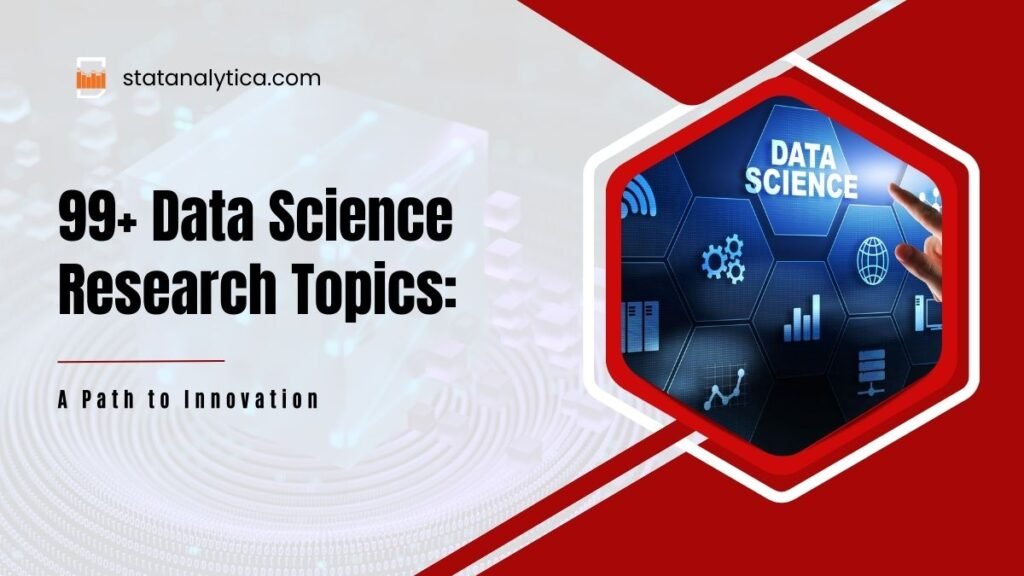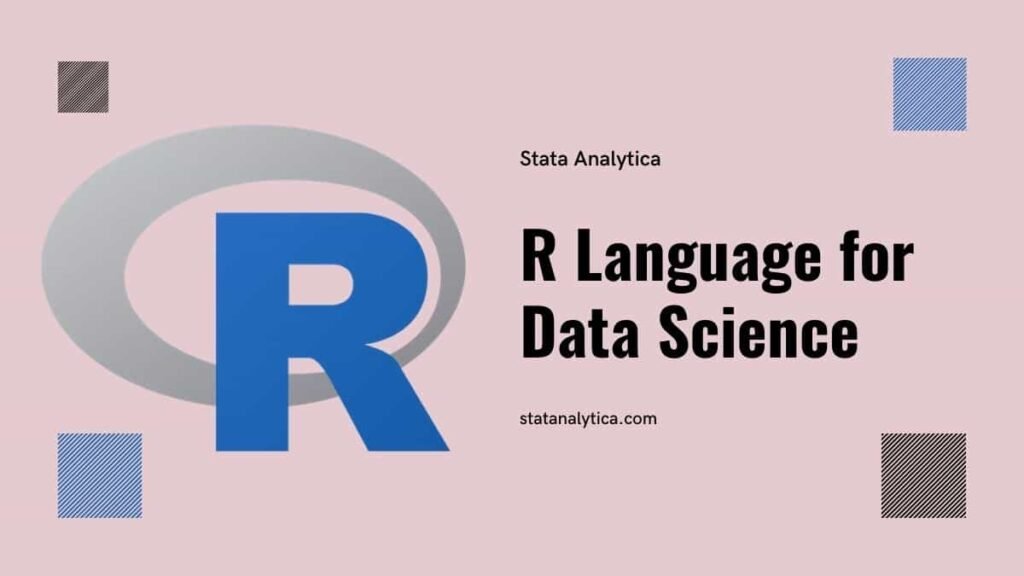In today’s rapidly advancing digital age, data science research plays a pivotal role in driving innovation, solving complex problems, and shaping the future of technology. Choosing the right data science research topics is paramount to making a meaningful impact in this field.
In this blog, we will delve into the intricacies of selecting compelling data science research topics, explore a range of intriguing ideas, and discuss the methodologies to conduct meaningful research.
How to Choose Data Science Research Topics?
Table of Contents
Selecting the right research topic is the cornerstone of a successful data science endeavor. Several factors come into play when making this decision.
- First and foremost, personal interests and passion are essential. A genuine curiosity about a particular subject can fuel the dedication and enthusiasm needed for in-depth research.
- Current trends and challenges in data science provide valuable insights into areas that demand attention.
- Additionally, the availability of data and resources, as well as the potential impact and applications of the research, should be carefully considered.
| Also Read: 7 Secret Methods for Studying: Tips & Tricks |
99+ Data Science Research Topics Ideas: Category Wise
Supervised Machine Learning
- Predictive modeling for disease outbreak prediction.
- Credit scoring using machine learning for financial institutions.
- Sentiment analysis for stock market predictions.
- Recommender systems for personalized content recommendations.
- Customer churn prediction in e-commerce.
- Speech recognition for voice assistants.
- Handwriting recognition for digitization of historical documents.
- Facial recognition for security and surveillance.
- Time series forecasting for energy consumption.
- Object detection in autonomous vehicles.
Unsupervised Machine Learning
- Market basket analysis for retail optimization.
- Topic modeling for content recommendation.
- Clustering techniques for social network analysis.
- Anomaly detection in manufacturing processes.
- Customer segmentation for marketing strategies.
- Event detection in social media data.
- Network traffic anomaly detection for cybersecurity.
- Anomaly detection in healthcare data.
- Fraud detection in insurance claims.
- Outlier detection in environmental monitoring.
Natural Language Processing (NLP)
- Abstractive text summarization for news articles.
- Multilingual sentiment analysis for global brands.
- Named entity recognition for information extraction.
- Speech-to-text transcription for accessibility.
- Hate speech detection in social media.
- Aspect-based sentiment analysis for product reviews.
- Text classification for content moderation.
- Language translation for low-resource languages.
- Chatbot development for customer support.
- Emotion detection in text and speech.
Deep Learning
- Image super-resolution using convolutional neural networks.
- Reinforcement learning for game playing and robotics.
- Generative adversarial networks (GANs) for image generation.
- Transfer learning for domain adaptation in deep models.
- Deep learning for medical image analysis.
- Video analysis for action recognition.
- Natural language understanding with transformer models.
- Speech synthesis using deep neural networks.
- AI-powered creative art generation.
- Deep reinforcement learning for autonomous vehicles.
Big Data Analytics
- Real-time data processing for IoT sensor networks.
- Social media data analysis for marketing insights.
- Data-driven decision-making in supply chain management.
- Customer journey analysis for e-commerce.
- Predictive maintenance using sensor data.
- Stream processing for financial market data.
- Energy consumption optimization in smart grids.
- Data analytics for climate change mitigation.
- Smart city infrastructure optimization.
- Data analytics for personalized healthcare recommendations.
Data Ethics and Privacy
- Fairness and bias mitigation in AI algorithms.
- Ethical considerations in AI for criminal justice.
- Privacy-preserving data sharing techniques.
- Algorithmic transparency and interpretability.
- Data anonymization for privacy protection.
- AI ethics in healthcare decision support.
- Ethical considerations in facial recognition technology.
- Governance frameworks for AI and data use.
- Data protection in the age of IoT.
- Ensuring AI accountability and responsibility.
Reinforcement Learning
- Autonomous drone navigation for package delivery.
- Deep reinforcement learning for game AI.
- Optimal resource allocation in cloud computing.
- Reinforcement learning for personalized education.
- Dynamic pricing strategies using reinforcement learning.
- Robot control and manipulation with RL.
- Multi-agent reinforcement learning for traffic management.
- Reinforcement learning in healthcare for treatment plans.
- Learning to optimize supply chain logistics.
- Reinforcement learning for inventory management.
Computer Vision
- Video-based human activity recognition.
- 3D object detection and tracking.
- Visual question answering for image understanding.
- Scene understanding for autonomous robots.
- Facial emotion recognition in real-time.
- Image deblurring and restoration.
- Visual SLAM for augmented reality applications.
- Image forensics and deepfake detection.
- Object counting and density estimation.
- Medical image segmentation and diagnosis.
Time Series Analysis
- Time series forecasting for renewable energy generation.
- Stock price prediction using LSTM models.
- Climate data analysis for weather forecasting.
- Anomaly detection in industrial sensor data.
- Predictive maintenance for machinery.
- Time series analysis of social media trends.
- Human behavior modeling with time series data.
- Forecasting economic indicators.
- Time series analysis of health data for disease prediction.
- Traffic flow prediction and optimization.
Graph Analytics
- Social network analysis for influence prediction.
- Recommender systems with graph-based models.
- Community detection in complex networks.
- Fraud detection in financial networks.
- Disease spread modeling in epidemiology.
- Knowledge graph construction and querying.
- Link prediction in citation networks.
- Graph-based sentiment analysis in social media.
- Urban planning with transportation network analysis.
- Ontology alignment and data integration in semantic web.
What Is The Right Research Methodology?
- Alignment with Objectives: Ensure that the chosen research approach aligns with the specific objectives of your study. This will help you answer the research questions effectively.
- Data Collection Methods: Carefully plan and execute data collection methods. Consider using surveys, interviews, data mining, or a combination of these based on the nature of your research and the data availability.
- Data Analysis Techniques: Select appropriate data analysis techniques that suit the research questions. This may involve using statistical analysis for quantitative data, machine learning algorithms for predictive modeling, or deep learning models for complex pattern recognition, depending on the research context.
- Ethical Considerations: Prioritize ethical considerations in data science research. This includes obtaining informed consent from study participants and ensuring data anonymization to protect privacy. Ethical guidelines should be followed throughout the research process.
Choosing the right research methodology involves a thoughtful and purposeful selection of methods and techniques that best serve the objectives of your data science research.
How to Conduct Data Science Research?
Conducting data science research involves a systematic and structured approach to generate insights or develop solutions using data. Here are the key steps to conduct data science research:
- Define Research Objectives
Clearly define the goals and objectives of your research. What specific questions do you want to answer or problems do you want to solve?
- Literature Review
Conduct a thorough literature review to understand the current state of research in your chosen area. Identify gaps, challenges, and potential research opportunities.
- Data Collection
Gather the relevant data for your research. This may involve data from sources like databases, surveys, APIs, or even creating your datasets.
- Data Preprocessing
Clean and preprocess the data to ensure it is in a usable format. This includes handling missing values, outliers, and data transformations.
- Exploratory Data Analysis (EDA)
Perform EDA to gain a deeper understanding of the data. Visualizations, summary statistics, and data profiling can help identify patterns and insights.
- Hypothesis Formulation (if applicable)
If your research involves hypothesis testing, formulate clear hypotheses based on your data and objectives.
- Model Development
Choose the appropriate modeling techniques (e.g., machine learning, statistical models) based on your research objectives. Develop and train models as needed.
- Evaluation and Validation
Assess the performance and validity of your models or analytical methods. Use appropriate metrics to measure how well they achieve the research goals.
- Interpret Results
Analyze the results and interpret what they mean in the context of your research objectives. Visualizations and clear explanations are important.
- Iterate and Refine
If necessary, iterate on your data collection, preprocessing, and modeling steps to improve results. This process may involve adjusting parameters or trying different algorithms.
- Ethical Considerations
Ensure that your research complies with ethical guidelines, particularly concerning data privacy and informed consent.
- Documentation
Maintain comprehensive documentation of your research process, including data sources, methodologies, and results. This helps in reproducibility and transparency.
- Communication
Communicate your findings through reports, presentations, or academic papers. Clearly convey the significance of your research and its implications.
- Peer Review and Feedback
If applicable, seek peer review and feedback from experts in the field to validate your research and gain valuable insights.
- Publication and Sharing
Consider publishing your research in reputable journals or sharing it with the broader community through conferences, online platforms, or industry events.
- Continuous Learning
Stay updated with the latest developments in data science and related fields to refine your research skills and methodologies.
Conducting data science research is a dynamic and iterative process, and each step is essential for generating meaningful insights and contributing to the field. It’s important to approach your research with a critical and systematic mindset, ensuring that your work is rigorous and well-documented.
Challenges and Pitfalls of Data Science Research
Data science research, while promising and impactful, comes with its set of challenges. Common obstacles include data quality issues, lack of domain expertise, algorithmic biases, and ethical dilemmas.
Researchers must be aware of these challenges and devise strategies to overcome them. Collaboration with domain experts, thorough validation of algorithms, and adherence to ethical guidelines are some of the approaches to mitigate potential pitfalls.
Impact and Application
The impact of data science research topics extends far beyond the confines of laboratories and academic institutions. Research outcomes often find applications in real-world scenarios, revolutionizing industries and enhancing the quality of life.
Predictive models in healthcare improve patient care and treatment outcomes. Advanced fraud detection systems safeguard financial transactions. Natural language processing technologies power virtual assistants and language translation services, fostering global communication.
Real-time data processing in IoT applications drives smart cities and connected ecosystems. Ethical considerations and privacy-preserving techniques ensure responsible and respectful use of personal data, building trust between technology and society.
Conclusion
Embarking on a journey in data science research topics is an exciting and rewarding endeavor. By choosing the right research topics, conducting rigorous studies, and addressing challenges ethically and responsibly, researchers can contribute significantly to the ever-evolving field of data science.
As we explore the depths of machine learning, natural language processing, big data analytics, and ethical considerations, we pave the way for innovation, shape the future of technology, and make a positive impact on the world.


